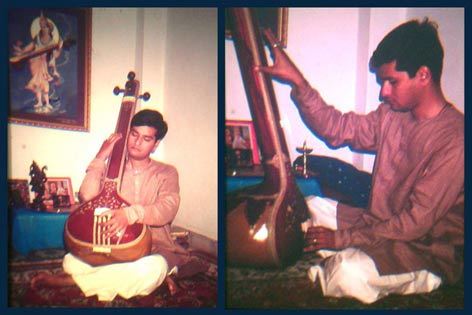Tuning the tanpura
For most people it is not so difficult to tune a string or sing a note after hearing it played on the piano; the problem arises when real precision is required. A musician with a sharp ear can easily be disturbed if the tuning is imprecise and as we often see in the Indian classical performance, the musicians stop playing until the tuning is again satisfactory. Why is this? When notes are heard together a relationship is formed, harmonious, sonant, dissonant etc. Each relationship has a different effect on our feelings, and there has to be a good connection between the notes, otherwise, a disturbance will occur. In this state of imbalance, the Indian musician is so disturbed that the channels to inspiration are blocked and no music can flow under those circumstances. The musician will first attempt to correct the tuning whilst playing, but if this is not helping he has no choice but to stop playing altogether and concentrate on tuning the instrument.

Attitude
The most difficult aspect of playing the tanpura is undoubtedly the tuning, and the keyword here to learn is 'patience'. Even a musician with a trained ear will have difficulties if the instrument is subjected to fluctuating room temperatures or drafts. The well-maintained tanpura is still a delicate and sensitive instrument. Often it takes time for the instrument to "settle down" and at first may seem out of balance, but after playing for a short time one may find the sound become more acceptable and pleasant. It is possible that the tuning of one instrument will affect that of another. To illustrate this here is a nice short story on the next page.
